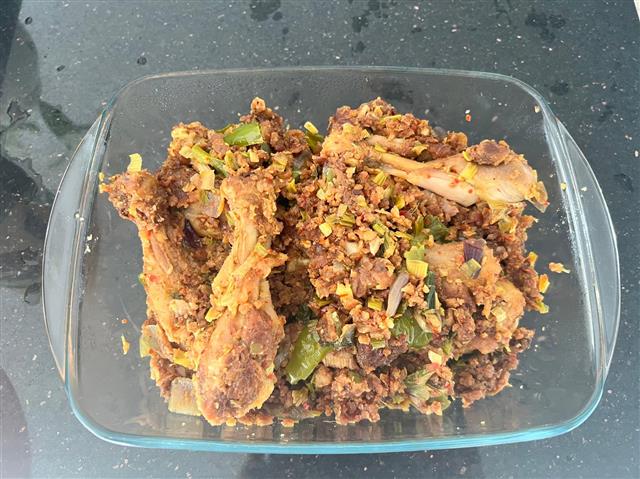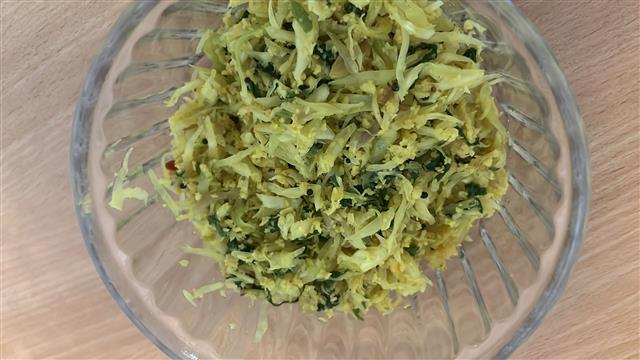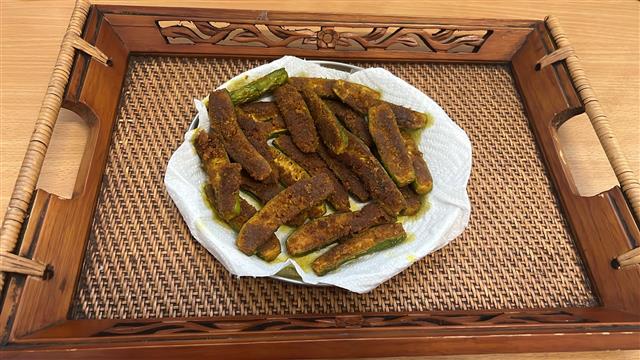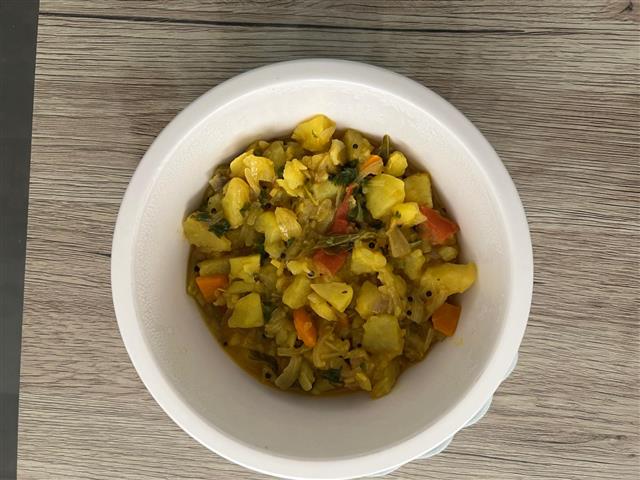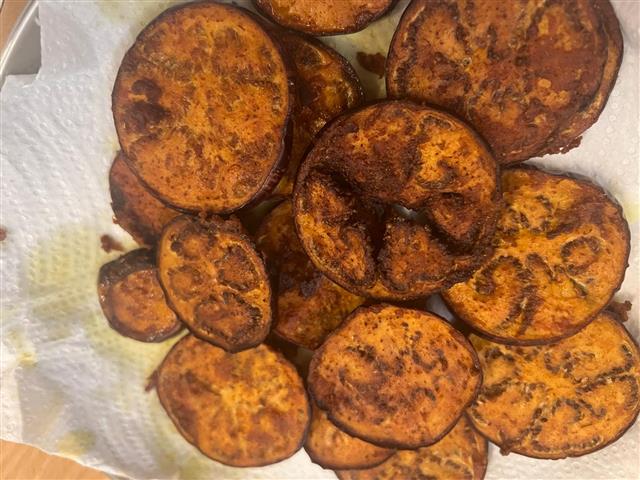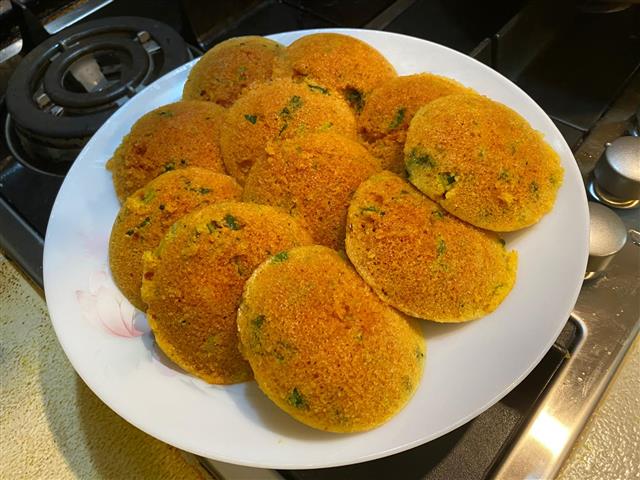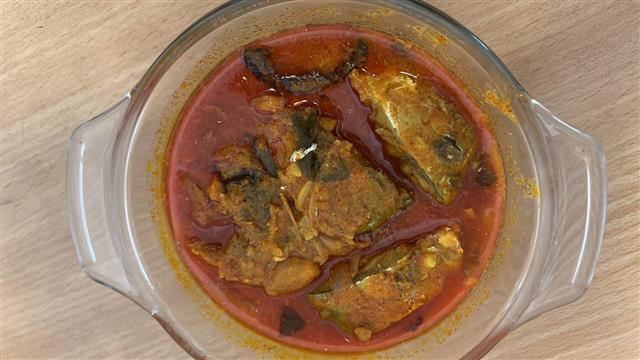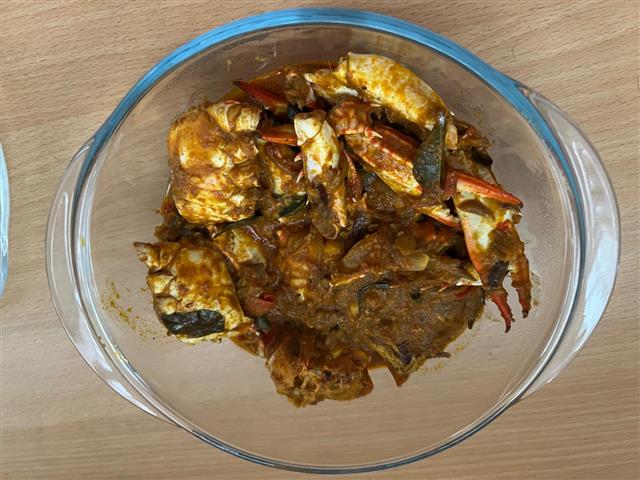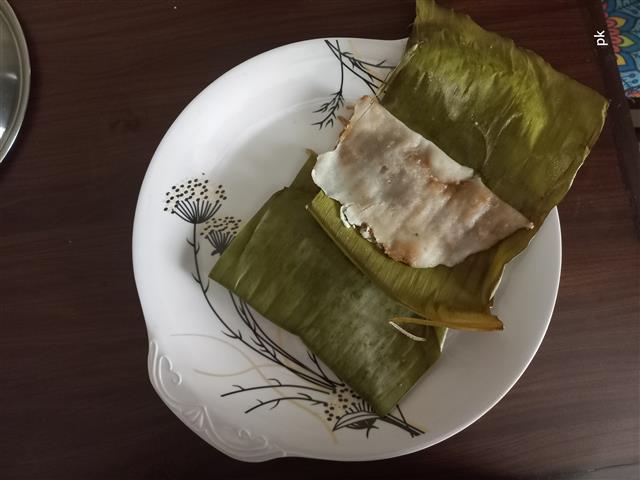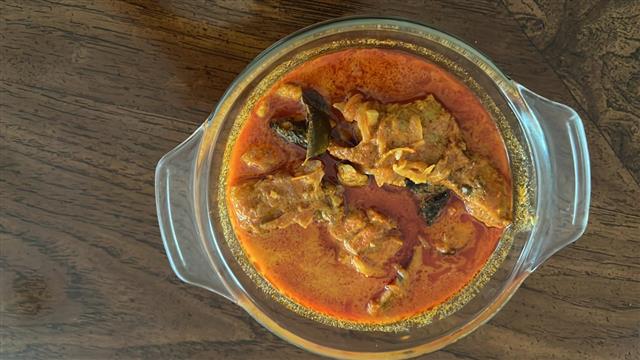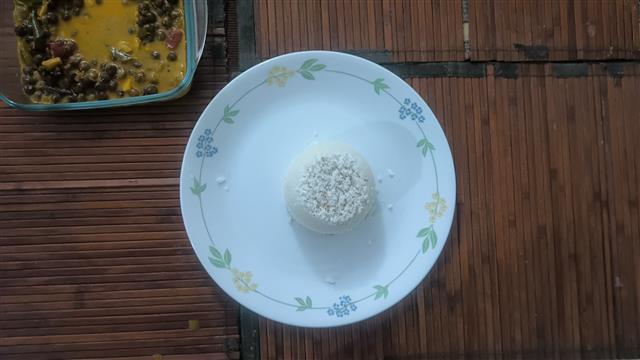
Amara Payar Mezhukkupuratti
(4 reviews)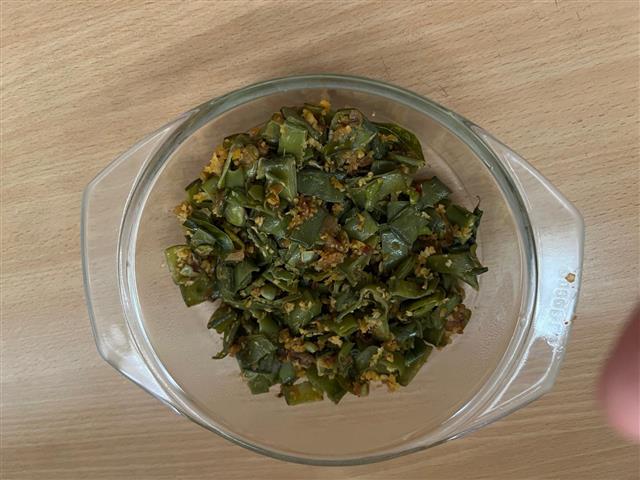
Amarappayaru Mezhukkupuratti is a dry vegetable side featuring tender hyacinth beans or Indian Broad Beans cooked with mustard seeds, onion, dried red chillies, and spices in coconut oil. This classic Kerala-style dish boasts a mildly spicy flavour with nutty elements.
The unique mezhukkupuratti technique gives you the tender yet crispy texture where vegetables are lightly fried and sautéed until dry yet tender.
It's a popular vegetable side that pairs perfectly with steamed rice and other traditional Kerala preparations. It makes a good lunchbox option, along with being a lunch or dinner accompaniment.
Ingredients
Directions
- Cut the Amarappayara and onion into small pieces. Add salt and cook in a little water.
- In another pan, add small onion and the dried red chillies and fry in coconut oil.
- Add chilli powder and saute well. Add a handful of grated coconut and mix well.
Cooking Tips
• Use fresh beans: They are tender and have a sweeter zest and cook faster. Avoid old or dried beans as they tend to be tough and bitter.
• Temper spices carefully: Heat the oil well before adding mustard seeds to ensure a crisp tempering without burning.
• Dry stir-fry: Keep stirring the beans on medium heat after adding them to ensure they dry out and develop a mild roasted taste without burning.
• Adjust spice level: You can reduce chilli powder or skip dried chillies for a milder version.
How to Serve
• With Rice and Sambar
• With Chapati or Roti
• With Moru Curry and Rice
• As part of Sadya meal
The Story Behind Amara Payar Mezhukkupuratti
The hyacinth bean has been part of Kerala's culinary landscape for centuries. Though not native to Kerala, it was probably introduced through ancient trade from Africa around 200 BCE. The plant adapted quickly to Kerala's tropical climate, and soon, humble amara payar became a common home garden vegetable. It has always been valued for its nutrition and ease of cultivation.
What Is Amarappayaru Mezhukkupuratti?
Mezhukkupuratti is a traditional Kerala cooking technique that means “lightly fried and sautéed till dry.” Unlike thoran, which often uses grated coconut, mezhukkupuratti focuses on frying vegetables with mustard seeds, spices, and sometimes garlic and onion, resulting in a dry, flavoursful side dish with a slightly crisp texture.
Amarappayaru Mezhukkupuratti specifically uses hyacinth beans (Indian Broad Beans) that are prized for their nutty flavours and tender texture. The beans are pre-cooked with some salt until just tender, then sautéed with a blend of spices and aromatics in coconut oil. This technique enhances their natural sweetness and adds a subtle smokiness from the tempering process.
In Keralite households, mezhukkupuratti dishes like this are daily essentials as they are simple, quick to prepare, and nourishing. This particular vegetable side embodies the Kerala culinary way of turning modest and fresh ingredients into vibrant and satisfying meals. It is often enjoyed during lunches and dinners.
In addition to regional variations, every family cooks it differently. Some families add garlic or shallots. Others might include a sprinkle of freshly ground black pepper or a touch of curry leaves. The dish's ability to transform itself to serve the home cook's needs has helped it remain a beloved comfort food across generations.
Differences Across Southern States
While Amarappayaru Mezhukkupuratti is as Kerala-based as it gets, similar stir-fries are found throughout southern India, and each has its unique regional flair.
Tamil Nadu: Known as Avarakkai PoriyalI, this version often includes freshly grated coconut. A mustard seed tempering with urad dal (black gram) gives it a nuttier flavour. Red chillies provide the heat. Sometimes, soaked and ground Bengal Gram or chana dal is cooked in oil to give a slightly creamier texture.
Karnataka: Hyacinth beans (Avarekaalu) are stir-fried with mustard seeds, cumin, and garnished with fresh coriander and sometimes curry leaves. Some add a pinch of jaggery to balance the bitterness of the beans.
Andhra Pradesh and Telangana: The beans might be cooked with more red chilli powder and tempered with an intense seasoning mix that has asafoetida or hing, garlic, and sometimes tamarind in it.
All these versions have one thing in common. The Amara Payar occupies the spotlight with regional spice blends and cooking fats, adding varied flavour profiles. These recipes provide a glimpse into the diverse culinary heritage of South India.
Ingredient Spotlight
Hyacinth Beans (Indian Broad Beans): This vegetable goes by many names across India, from surti papadi in Gujarat to Avarai in Tamil Nadu. It is rich in protein, fibre, vitamins, and minerals. It has a slightly sweet taste with a hint of nutty flavours. The beans are considered a good source of plant-based protein
Coconut Oil: Kerala cuisine will never be the same without it. Coconut oil adds a mild sweetness to any dish and comes with a distinct aroma. Its high smoking point makes it an ideal fat for sautéing and frying.
Spices: Mustard seeds and dried red chillies provide heat and a subtle crunch. This offers a nice balance to the softened beans and the hint of sweetness.
Pro Tips for Perfect Results
→ Cook beans for the right amount of time: Avoid overcooking the beans. You want it to retain slight firmness and not turn mushy during sautéing.
→ Use coconut oil: For the original taste of Kerala foods. You do this to retain the nutty aroma, so the dish stays true to the culinary culture
→ Temper spices carefully: Don't burn the mustard seeds or chillies; moderate heat helps release aroma without bitterness.
→ Use a bigger pan: Sauté the beans in batches if needed or use a bigger pan. This ensures even cooking and the bit of roasting required.
Amara Payar Mezhukkupuratti Variations
Regional Variations in Kerala
Central Kerala: Some cooks add finely chopped garlic and curry leaves for extra aroma.
Northern Kerala: May include mustard seeds tempered with fennel seeds. Some add black pepper for warmth.
Southern Kerala: Tends to keep it simpler with just mustard seeds, chillies, and onions, and emphasising the natural flavours of broad beans.
Storing & Reheating Tips
→ Fridge: Keep leftovers in an airtight container in the refrigerator for up to 2 days.
→ Reheat: Reheat gently in a pan with a teaspoon of oil on low heat, Stir occasionally to add some crispness.
Tip: Avoid microwaving to prevent sogginess.
→ Freeze: It does not freeze well when you add coconut. You can freeze without adding the coconut for 2 to 3 weeks. Any longer and the amara payar will stick together and get clumpy when thawed.
Common Mistakes to Avoid
• Overcooking the beans until mushy.
• Burning spices during tempering which causes bitterness.
• Adding excess water while cooking beans initially. Aim for a dry final dish.
Frequently Asked Questions
- Can I substitute other beans?
Yes, green beans or French beans work, but flavours and texture will be different.
- Is this dish vegan?
Yes, it's fully plant-based, cooked with coconut oil and no dairy.
- Can I use coconut milk?
Traditional mezhukkupuratti recipes does not use liquids except water. By adding it, this becomes an Erissery
Equipment Needed
→ Heavy-bottomed frying pan or kadai
→ Wooden spatula or ladle
→ Knife and chopping board
